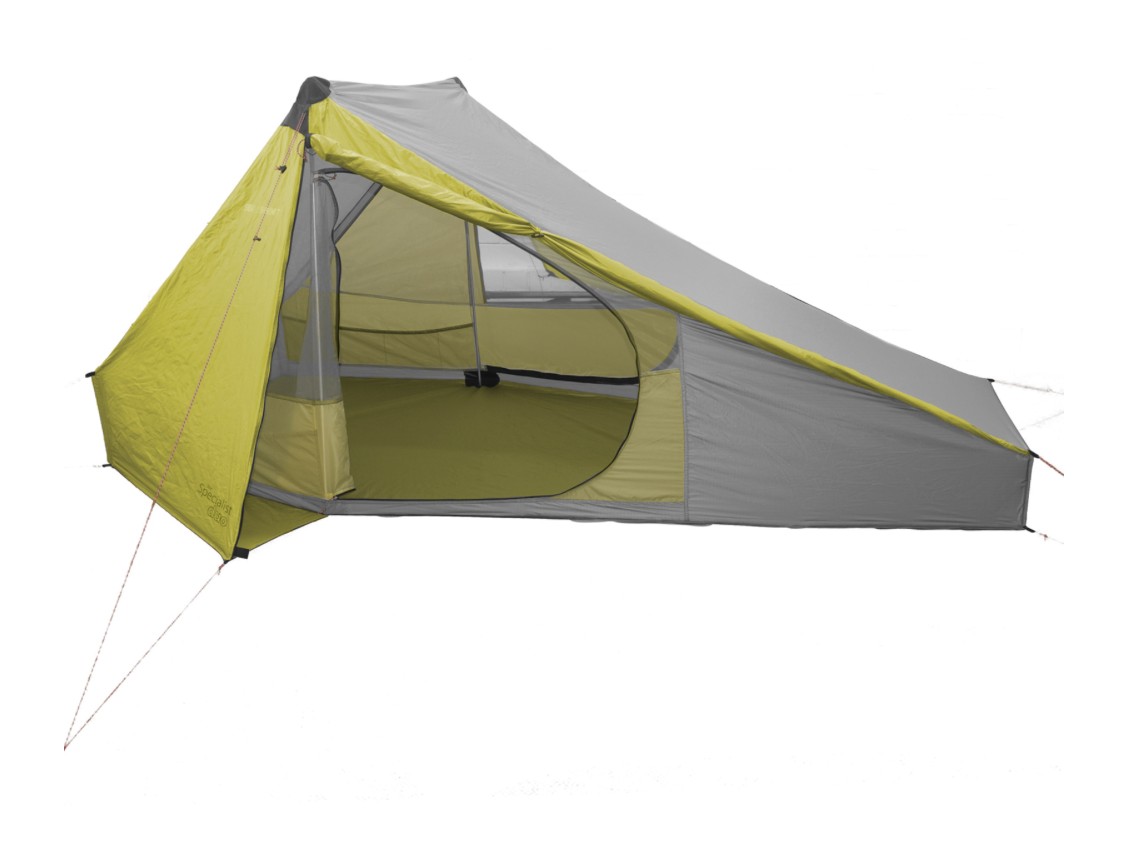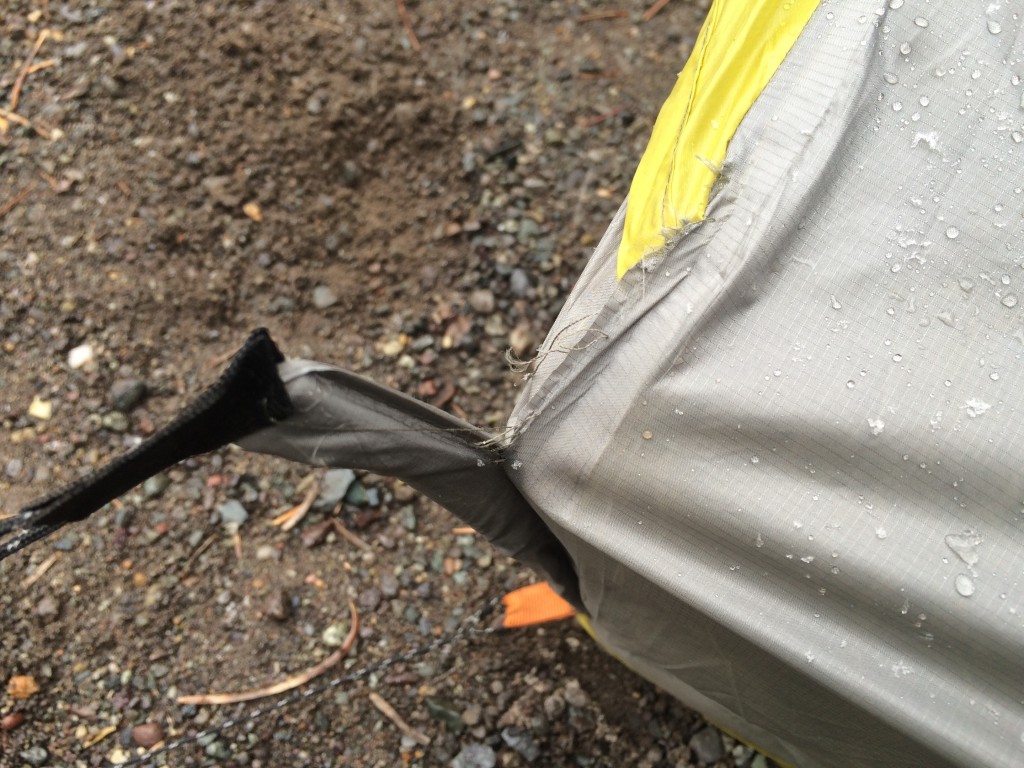Sea to Summit Specialist Duo Review
Our Verdict
Our Analysis and Test Results
The Sea to Summit Specialist Duo enticed us to test it with a lovely presentation and marketing language on its website, but unfortunately did not deliver in performance. There are some aspects of this tent that we liked, such as the fact that it included all the stakes and poles needed for set up, a rarity in the ultralight tent world. It also contains a small shammy for wiping off the condensation in the morning (cute), and set up instructions conveniently printed onto the outside of the stuff sack (practical and appreciated).
However, there are so many aspects of this tent that left us pondering, “what were they thinking?” that compared to pretty much every model we have ever tested, we can't possibly recommend this tent to anyone. The real kick in the pants is the price tag — $500?!?! We will detail some of the flaws below, but unless you are intrigued by the idea of purchasing this tent, we suggest you click the back button on your browser now and save your time for researching higher quality tents.
Purchase this tent, and you will receive the tent body, two custom length poles, six lightweight and reasonably sturdy stakes, a shammy for mopping up condensation before you move in the morning, and a stuff sack with setup instructions printed on the outside. There is no need to acquire anything else to use this tent.
Performance Comparison
Livability
For a two-person tent, this one sure is small. Not only is it quite short, meaning tall people will have no room to spare or not enough room period, but it tapers oddly at both ends. When sleeping in it with two people, there was not enough room for our sleeping mats, which ended up layered one on top of the other, and even at the shoulders, we were bulging out of this closed up tent.
The vestibules are super tiny, to the point of not being large enough for an overnight backpack and shoes. This tent could work if you are short and alone, but the expensive price tag would still be in the way of making this a solid purchase. Check out the most livable tents we have tested — the Zpacks Duplex or TarpTent MoTrail.
Weight
This tent weighs in at 1 lb. 12.4 ounces with everything included in the package. A functional trail weight (minus the sack and shammy) would be 1 lb. 11.6 oz., but you could also remove 4.8 oz. of weight if you use trekking poles to set it up instead of the included set. This weight is pretty solid for two people, far less than our 1 lb per person ultralight designation when considering shelter. The problem is, the tent has so many issues that the low weight isn't so important.
Weather Resistance
Let us begin by saying you better hope you aren't in a heavy rainstorm in this tent. It is a single walled tent that is made of Pertex Quantum fabric on the roof, whereas the vestibules and floor are SilNylon. We aren't sure what went into the decision to use Pertex, but we found that it stretches and sags considerably when wet. A bigger issue is there are no overhanging eaves to this tent, so water runs down off the top onto the sides and then under the floor. Combined with its tiny interior size and small vestibules, and there is virtually no chance your stuff won't get wet if it rains heavily.
Every stake out point has two wires going to it, but line locks are only present on the upper wire (see photo). In practice, this meant it was quite hard, if not impossible, to adequately tension the tent when wet. To add insult to injury, while we were trying to do so one time we accidentally tripped over a stakeout wire, and the entire corner seam of the tent ripped apart, calling into question not only its weather resistance but the quality of construction as well. If you want a lightweight shelter that is highly weather resistant (and after all, isn't that why we need tents to begin with?) then check out the Hyperlite Mountain Gear UltaMid 2 or the Black Diamond Beta Light.
Adaptability
Like most tarp-tent style designs, this one is not free standing and so requires soft enough ground, or enough in situ anchors, for six solid stakeouts. Since it is fully enclosed, it can be used to protect from bugs on any adventure, but we would only consider using it if there was no chance of rain. In general, we find tarps to be the single most adaptable form of shelter, and the Hyperlite Mountain Gear Square Flat Tarp is our recommendation if adaptability is your main concern.
Ease of Setup
This tent is relatively simple to set up, aided by the fact that instructions are on the outside of the stuff sack. Stake out the four corners first, then insert the two poles. Unlike most tarp tents that have the poles on the outside of the inner tent, this one has them on the inside, making it a bit more awkward than most to set up, but not much slower.
Finally, stake out the two peak tensioners at the edges of the vestibules, and use the provided line locks to tension where needed. Quite honestly this is the single best feature of this tent, and only the BD Beta Light was easier to set up in a hurry.
Best Applications
If we weren't clear enough already, we don't recommend this tent. However, if you are going to use it, it will work best as a solo shelter for someone who isn't too tall, in an environment like the desert where there is no chance of rain, and you want privacy or protection from bugs.
Value
This tent retails for an eye-opening $500. In our opinion and experience, and certainly compared to the very high-quality competition we have also reviewed here, this price is unjustifiable.
Conclusion
The Sea to Summit Specialist Duo is a very poorly performing tent that we can't recommend for purchase. While it seems to address all of the ultralight shelter bullet points, the fact is it disappoints in many areas, and should not be considered adequate weather protection for anything but the driest and mildest of climates.














